7 Authentic Kyoto Experiences You Can't Miss
When you set foot in Kyoto, you're stepping into a world where tradition blends seamlessly with serene beauty. Imagine yourself wandering through the mystical Arashiyama Bamboo Grove, its towering stalks swaying gently in the breeze. Or perhaps you'll find yourself kneeling on tatami mats, whisking matcha during an age-old tea ceremony. These aren't just activities; they're gateways to understanding the soul of Kyoto. Yet, there's more beneath the surface of this ancient city. As you explore further, you'll uncover hidden gems that reveal why each of these experiences is not just memorable but essential. What will you discover as you venture deeper into Kyoto's heart?
Exploring the Arashiyama Bamboo Grove
Wander through the towering paths of Arashiyama Bamboo Grove and immerse yourself in its serene beauty. As you stroll beneath the lush, towering stalks that seem to stretch endlessly towards the sky, the sun filters through the leaves, casting a calm, green glow that envelops you in a tranquility that's hard to find elsewhere. The whisper of the wind as it passes through the bamboo creates a natural symphony that complements the visual spectacle.
This iconic Kyoto spot isn't just a feast for the eyes; it's a place steeped in history and culture. The grove is located on the outskirts of Kyoto, near the ancient Tenryu-ji Temple, a UNESCO World Heritage site. You'll find yourself walking the same paths that nobles might've tread centuries ago, adding a layer of timelessness to your visit.
Don't rush your visit; take your time to meander and fully appreciate the unique atmosphere. Early mornings or late afternoons are ideal times to visit, as the light is especially beautiful and the crowds are thinner. Bring your camera, but also make sure to put it away for a moment to truly connect with this enchanting environment.
Attending a Traditional Tea Ceremony
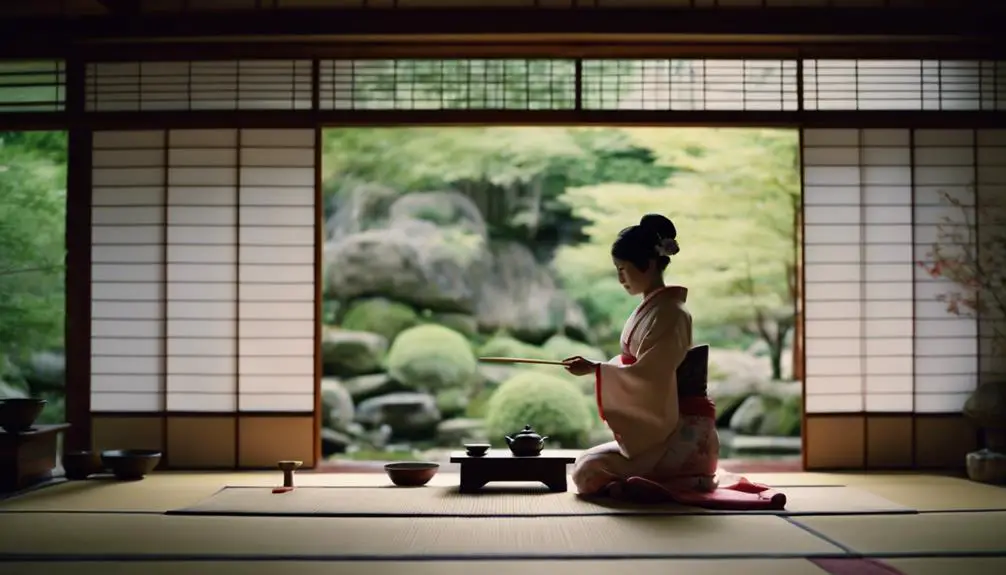
After exploring the Arashiyama Bamboo Grove, immerse yourself further into Kyoto's culture by attending a traditional tea ceremony. This centuries-old ritual isn't just about drinking tea; it's a spiritual and philosophical experience that embodies harmony, respect, purity, and tranquility.
You'll kneel on tatami mats in a tea house, often surrounded by a tranquil garden, setting the scene for a moment of peace. The host, dressed in a kimono, will prepare matcha (powdered green tea) using precise, graceful movements. Each gesture has meaning and is performed with a deep focus that's mesmerizing to watch.
Don't rush through this. Savor each step, from the cleansing of the utensils to the pouring of the tea. You'll be served a wagashi (sweet treat) which complements the bitter matcha, symbolizing the balance of life.
Engage in this practice not just as a spectator, but as a participant. You'll learn the proper way to receive and drink tea, which is an art in itself. This interaction isn't just about tasting tea, but also about understanding and appreciating a pivotal aspect of Japanese culture.
Through this ceremony, you'll connect with Kyoto's history and its enduring traditions.
Visiting Fushimi Inari Shrine
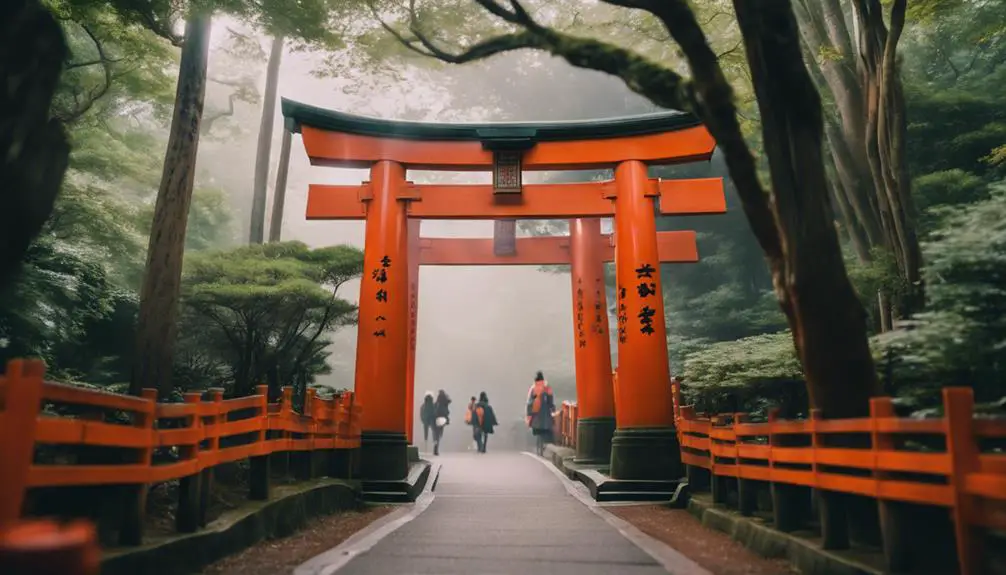
Next, explore the iconic Fushimi Inari Shrine, renowned for its thousands of vermilion torii gates. As you wander through the seemingly endless paths lined with these bright gates, you'll feel as though you've stepped into another world. The shrine, dedicated to Inari, the Shinto god of rice and prosperity, offers a unique glimpse into the spiritual and historical heartbeat of Kyoto.
Start your journey at the main gate, where you'll be greeted by impressive statues of foxes, considered messengers of Inari. These foxes often hold keys in their mouths, symbolizing the key to the rice granary. Don't rush; take your time to soak in the serene atmosphere and the soft rustling of the bamboo groves that flank the pathways.
As you ascend the mountain, the crowds thin and the pathway becomes more intimate. You'll find smaller shrines dotted along the route, where locals come to pray for good fortune and success in their businesses. It's not just a tourist spot; it's a place of active worship and local community life.
Reaching the summit offers not only a sense of accomplishment but also stunning views over Kyoto. You'll leave Fushimi Inari Shrine with a deeper understanding of Japanese culture and perhaps a few breathtaking photos to accompany your memories.
Strolling Through Gion District
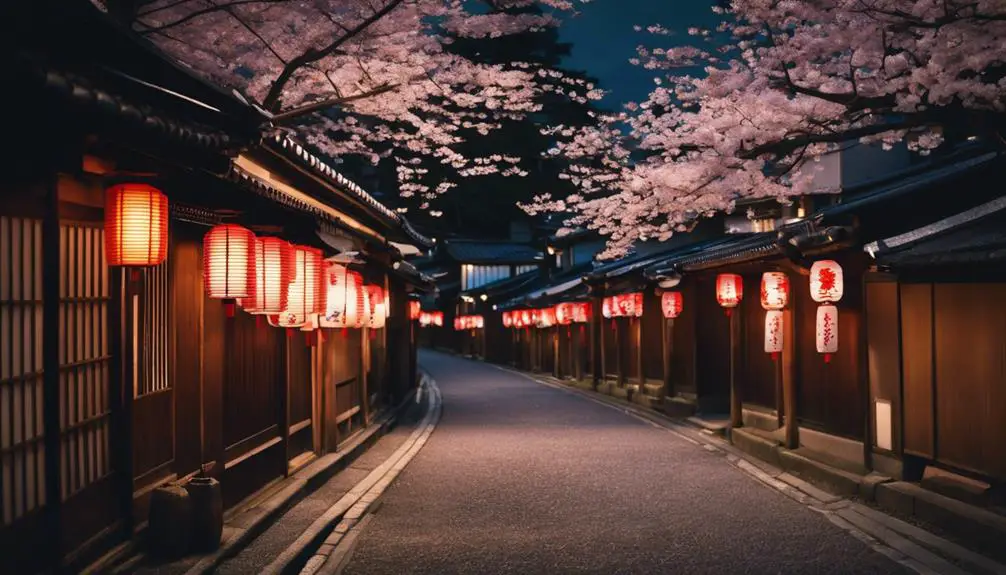
Continuing your journey in Kyoto, make your way to the Gion District, an area famed for its preservation of traditional wooden machiya houses and the elusive geisha. As you wander the narrow lanes, you'll feel as though you've stepped back in time. Keep your camera ready; you might catch a glimpse of a geisha in her exquisite kimono and traditional makeup, a moving piece of living art.
Gion isn't just about geisha spotting. It's a vibrant area where the hum of modern life seamlessly blends with the quiet dignity of Kyoto's cultural heritage. You'll find quaint tea houses nestled between exclusive boutiques selling handcrafted goods. Explore the shops for unique souvenirs—perhaps a hand-folded fan or a box of matcha tea.
Don't miss the chance to visit the Yasaka Shrine at the end of Shijo Avenue. During the evening, the lanterns light up, creating a magical atmosphere that's perfect for reflective moments or a peaceful stroll.
Lastly, keep your ears open for traditional music drifting from ochaya (teahouses) as you explore. It's these subtle, enchanting sounds that will truly make your walk through Gion unforgettable.
Experiencing Kaiseki Dining
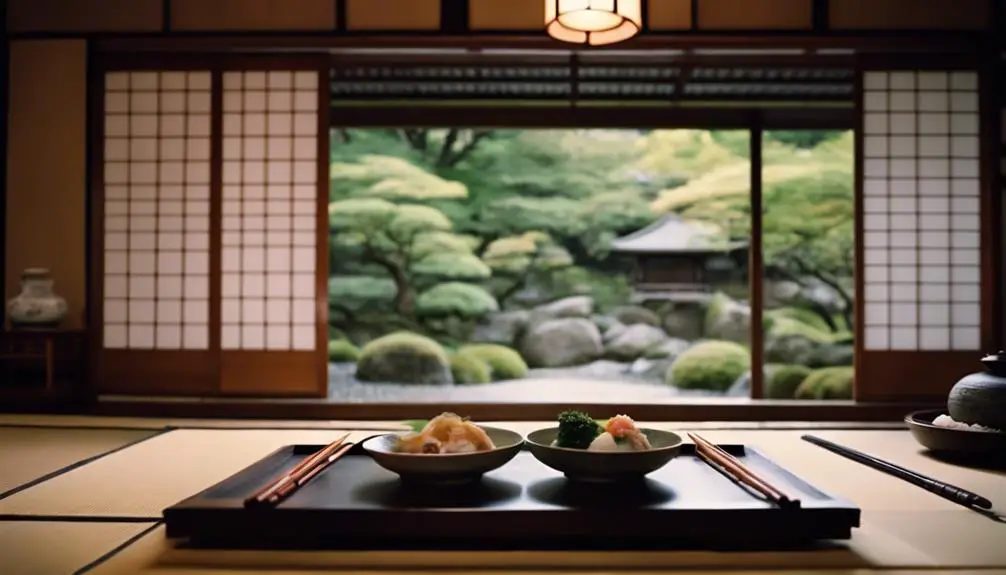
Savor the art of Kaiseki dining, a quintessential culinary experience that epitomizes the sophistication of Japanese cuisine. When you're in Kyoto, you can't miss the chance to indulge in this traditional multi-course meal that reflects the local culture and the season's freshest ingredients. Each dish is a masterpiece, carefully crafted to balance taste, texture, and appearance. Here's why you'll be captivated by Kaiseki:
- Seasonal Ingredients: Each course in a Kaiseki meal showcases seasonal ingredients, ensuring you're experiencing the freshest flavors that reflect the time of year in Kyoto.
- Artistic Presentation: The presentation of food in Kaiseki is as important as the taste. You'll be amazed at the delicate artistry that goes into arranging each dish, making your meal a feast for the eyes as well as the palate.
- Harmony of Flavors: Kaiseki chefs are masters at creating a harmonious blend of flavors and textures, providing a subtle, yet profound taste experience that builds throughout the meal.
- Cultural Immersion: Dining Kaiseki-style isn't just eating; it's an immersive cultural experience that provides insight into the Japanese way of life and aesthetics.
Don't just eat while you're in Kyoto—experience a culinary journey that you'll remember for a lifetime.
Touring the Kyoto Imperial Palace
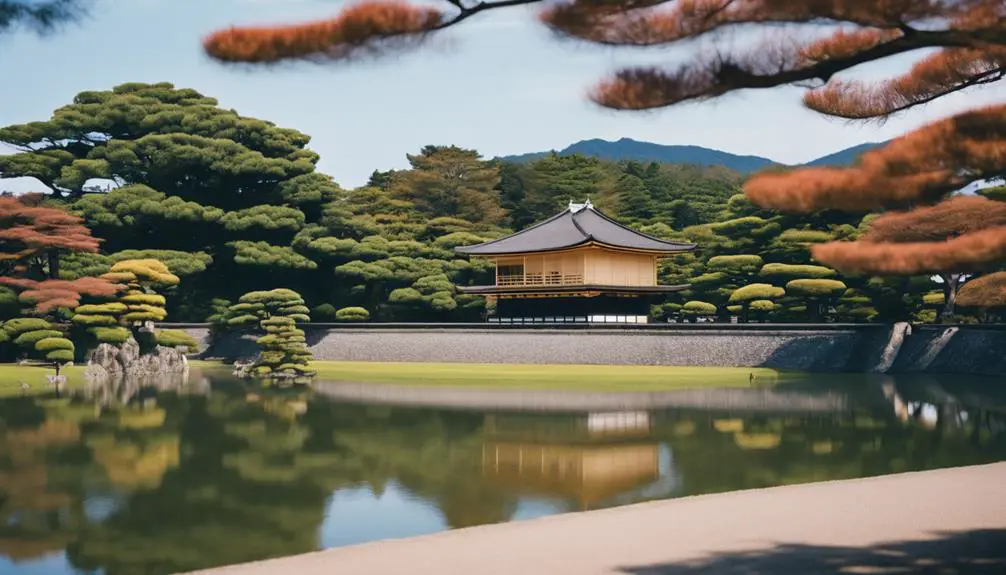
Explore the grandeur of the Kyoto Imperial Palace, where history and elegance converge in the heart of the city. As you walk through the expansive grounds, you'll discover the traditional Japanese architecture, with its intricate woodwork and sweeping roofs that seem to float above the delicately manicured gardens. This historic complex was once the residence of Japan's Imperial Family, making it a treasure trove of stories and cultural significance.
You'll be able to tour several buildings, including the Shishinden, the main hall used for important ceremonies. Notice the detailed tatami mats and the imperial throne, known as the Takamikura. It's an exquisite sight, symbolizing the cultural heritage that has been preserved over centuries.
Don't miss the Oikeniwa, a meticulously designed garden that complements the palace's architecture. The garden features a large pond and beautifully arranged stones, perfect for reflective moments as you soak in the serene ambience.
Visiting the Kyoto Imperial Palace isn't just about viewing its beauty; it's an immersive experience that connects you with the past emperors of Japan and their courtly life. Make sure you check for tour availability in advance, as access to the palace grounds is restricted and often requires a guide.
Participating in a Zen Meditation Session
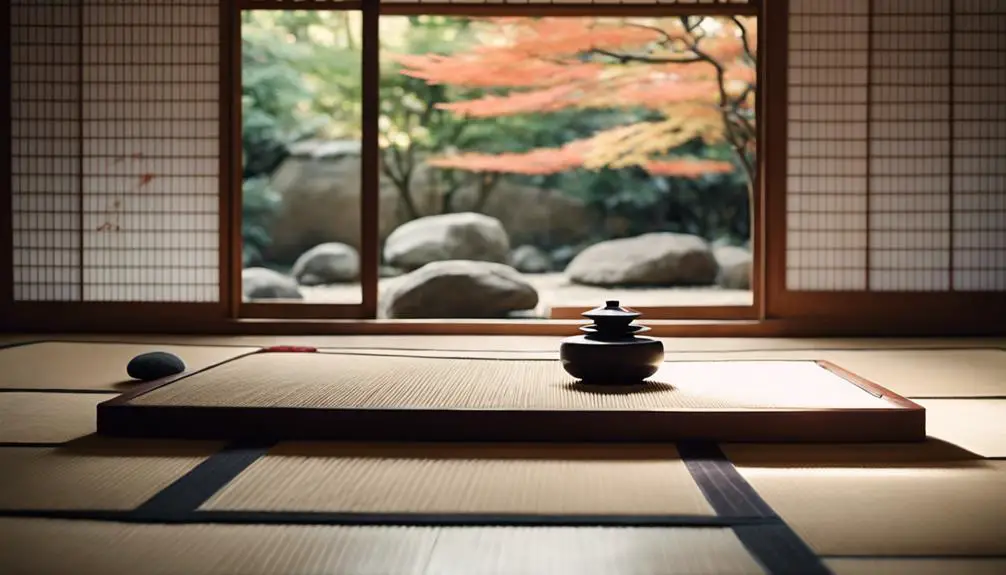
After experiencing the historical splendor of the Kyoto Imperial Palace, you'll find the practice of Zen meditation offers a profound way to connect more deeply with Japanese culture. Imagine sitting in a tranquil temple garden, learning to quiet your mind and body amidst the sounds of rustling leaves and distant temple bells.
Here are four compelling reasons to participate in a Zen meditation session in Kyoto:
- Cultural Immersion: Engaging in Zen meditation allows you to experience an integral part of Japanese spiritual life. It's not just about sitting quietly; it's about understanding a philosophy that has shaped the culture for centuries.
- Stress Reduction: Zen meditation is renowned for its stress-relieving benefits. You'll learn techniques that can help you maintain calm and focus, which you can take back home and integrate into your daily life.
- Historical Context: Many sessions are held in ancient temples, where you can absorb the rich history of the place as you meditate. It's a unique way to combine travel and personal growth.
- Connection with Nature: Typically set in serene settings, these sessions provide a chance to reconnect with nature, promoting a sense of peace and well-being that's often lost in the hustle of everyday life.
